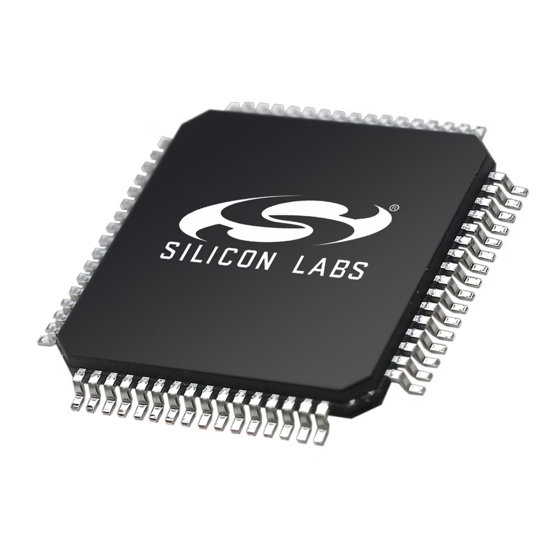
Table of Contents
Advertisement
Quick Links
Chipsmall Limited consists of a professional team with an average of over 10 year of expertise in the distribution
of electronic components. Based in Hongkong, we have already established firm and mutual-benefit business
relationships with customers from,Europe,America and south Asia,supplying obsolete and hard-to-find components
to meet their specific needs.
With the principle of "Quality Parts,Customers Priority,Honest Operation,and Considerate Service",our business
mainly focus on the distribution of electronic components. Line cards we deal with include
Microchip,ALPS,ROHM,Xilinx,Pulse,ON,Everlight and Freescale. Main products comprise
IC,Modules,Potentiometer,IC Socket,Relay,Connector.Our parts cover such applications as commercial,industrial,
and automotives areas.
We are looking forward to setting up business relationship with you and hope to provide you with the best service
and solution. Let us make a better world for our industry!
Contact us
Tel: +86-755-8981 8866 Fax: +86-755-8427 6832
Email & Skype: info@chipsmall.com Web: www.chipsmall.com
Address: A1208, Overseas Decoration Building, #122 Zhenhua RD., Futian, Shenzhen, China
Advertisement
Table of Contents

Summary of Contents for Silicon Laboratories C8051F02x-DK
- Page 1 Chipsmall Limited consists of a professional team with an average of over 10 year of expertise in the distribution of electronic components. Based in Hongkong, we have already established firm and mutual-benefit business relationships with customers from,Europe,America and south Asia,supplying obsolete and hard-to-find components to meet their specific needs.
-
Page 2: Kit Contents
• USB Cable 2. Hardware Setup using a USB Debug Adapter The target board is connected to a PC running the Silicon Laboratories IDE via the USB Debug Adapter as shown in Figure 1. 1. Connect the USB Debug Adapter to the JTAG connector on the target board with the 10-pin ribbon cable. -
Page 3: Software Setup
CD-ROM for additional information on using the Keil 8051 tools with the Silicon Laboratories IDE. To build an absolute object file using the Silicon Laboratories IDE project manager, you must first create a project. A project consists of a set of files, IDE configuration, debug views, and a target build configuration (list of files and tool configurations used as input to the assembler, compiler, and linker when building an output object file). - Page 4 C8051F02x-DK 4.4.1. Creating a New Project 1. Select Project New Project to open a new project and reset all configuration settings to default. 2. Select File New File to open an editor window. Create your source file(s) and save the file(s) with a rec- ognized extension, such as .c, .h, or .asm, to enable color syntax highlighting.
-
Page 5: Example Source Code
C8051F02x-DK 5. Example Source Code Example source code and register definition files are provided in the “SiLabs\MCU\Examples\C8051F02x” directory during IDE installation. These files may be used as a template for code development. Example applications include a blinking LED example which configures the green LED on the target board to blink at a fixed rate. -
Page 6: Target Board
C8051F02x-DK 6. Target Board The C8051F02x Development Kit includes a target board with a C8051F020 device pre-installed for evaluation and preliminary software development. Numerous input/output (I/O) connections are provided to facilitate prototyping using the target board. Refer to Figure 2 for the locations of the various I/O connectors. - Page 7 C8051F02x-DK 6.1. System Clock Sources The C8051F020 device installed on the target board features a calibrated programmable internal oscillator which is enabled as the system clock source on reset. After reset, the internal oscillator operates at a frequency of 2 MHz (±2%) by default but may be configured by software to operate at other frequencies.
- Page 8 C8051F02x-DK 6.4. Serial Interface (J5) A RS232 transceiver circuit and DB-9 (J5) connector are provided on the target board to facilitate serial connec- tions to UART0 of the C8051F020. The TX, RX, RTS and CTS signals of UART0 may be connected to the DB-9 connector and transceiver by installing shorting blocks on headers J6, J8, J9 and J10.
- Page 9 C8051F02x-DK 6.6. PORT I/O Connectors (J12 - J19) In addition to all port I/O signals being routed to the 96-pin expansion connector, each of the eight parallel ports of the C8051F020 has its own 10-pin header connector. Each connector provides a pin for the corresponding port pins 0-7, +3.3 VDC and digital ground.
- Page 10 C8051F02x-DK 6.9. Expansion I/O Connector (J24) The 96-pin expansion I/O connector J24 is used to connect daughter boards to the main target board. J24 provides access to many C8051F020 signal pins. Pins for +3 V, digital ground, analog ground and the unregulated power supply (VUNREG) are also available.
- Page 11 C8051F02x-DK 7. Schematic Rev. 0.6...
- Page 12 C8051F02x-DK OCUMENT HANGE Revision 0.4 to Revision 0.5 Section 1, added USB Debug Adapter and USB Cable. Section 2, changed name from "Hardware Setup" to "Hardware Setup using an EC2 Serial Adapter". Section 2, added 2 Notes bullets.
- Page 13 The products must not be used within any Life Support System without the specific written consent of Silicon Laboratories. A "Life Support System" is any product or system intended to support or sustain life and/or health, which, if it fails, can be reasonably expected to result in significant personal injury or death.

Need help?
Do you have a question about the C8051F02x-DK and is the answer not in the manual?
Questions and answers